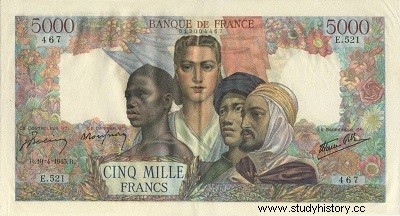
This Empire then extends over 13 million square kilometers, it governs 112 million inhabitants, including 42 million in the metropolis, it flies the French flag in the five parts of the world, it is the second colonial empire of the time. Thus are achieved the France of 100 million inhabitants advocated by General Charles Mangin, the France of the five parts of the world, dear to Octave Homberg, or even the Greater France. After 1931, the term “colony” beginning to take on a reactionary, even pejorative meaning, people spoke more readily of overseas France. The Empire is not an official name, the word bringing back bad memories for the Republic, but a term that writers and journalists use all the more willingly as it flatters the cocky taste of the general public as evoking the superb British Empire. , so admired, so envied.
The essential characteristics of the French Empire are dispersion, rigorous centralization, close economic subjection to the metropolis and the great diversification of the political systems of its various parts constituents.
The dispersion is obvious since the Empire is present in the five continents and on all the seas of the globe. It is however corrected, to a very large extent, by the fact that the block of a single piece North Africa - Sahara - French West Africa (including Togo) French Equatorial Africa (including Cameroon), with a total of 40 million inhabitants, is separated from the 42 million French people of the metropolis only by a small sea, the western Mediterranean. The whole French Euro-
ble thus represented, almost in one piece, more than two-thirds of the population of the Empire.
According to the old French tradition, centralization is very strong. All important matters are decided in Paris and the overseas economy is highly dependent on France, both for its guiding principles and its general orientation and for its financing.
The French Enlightenment had the support of great intellectuals of the time, such as Voltaire. By Lilian AguiarThe Illuminist movement took place between 1680 and 1780, throughout Europe, especially in France, in the 18th century. The Enlightenment was characterized by the importance given to reas
